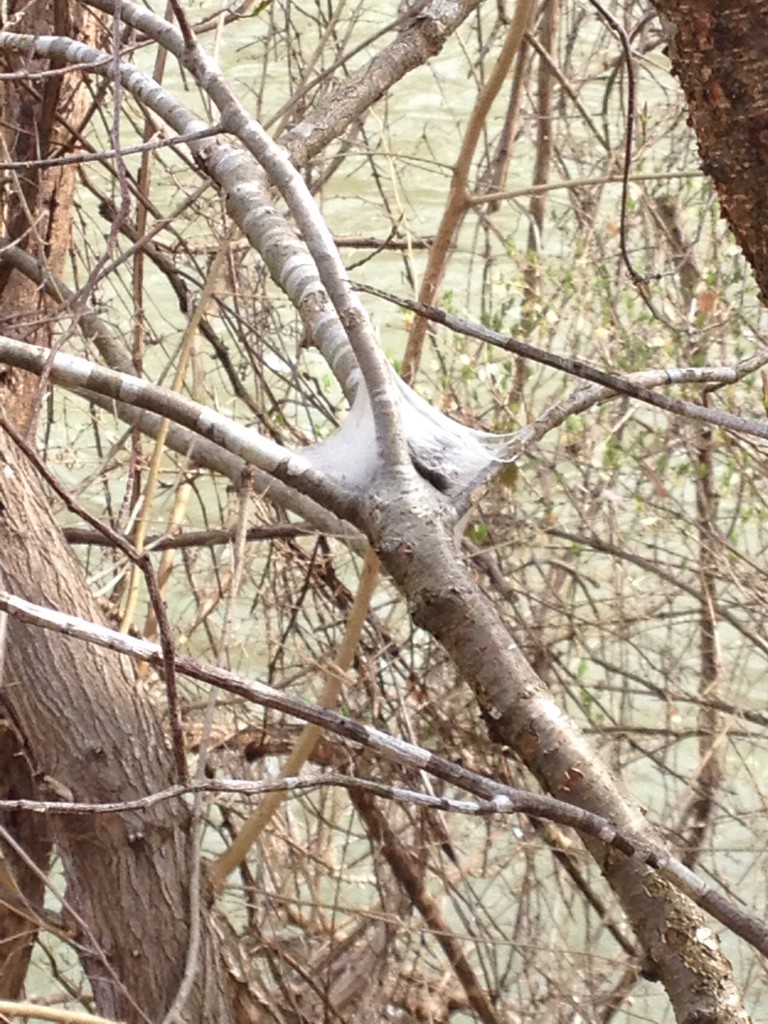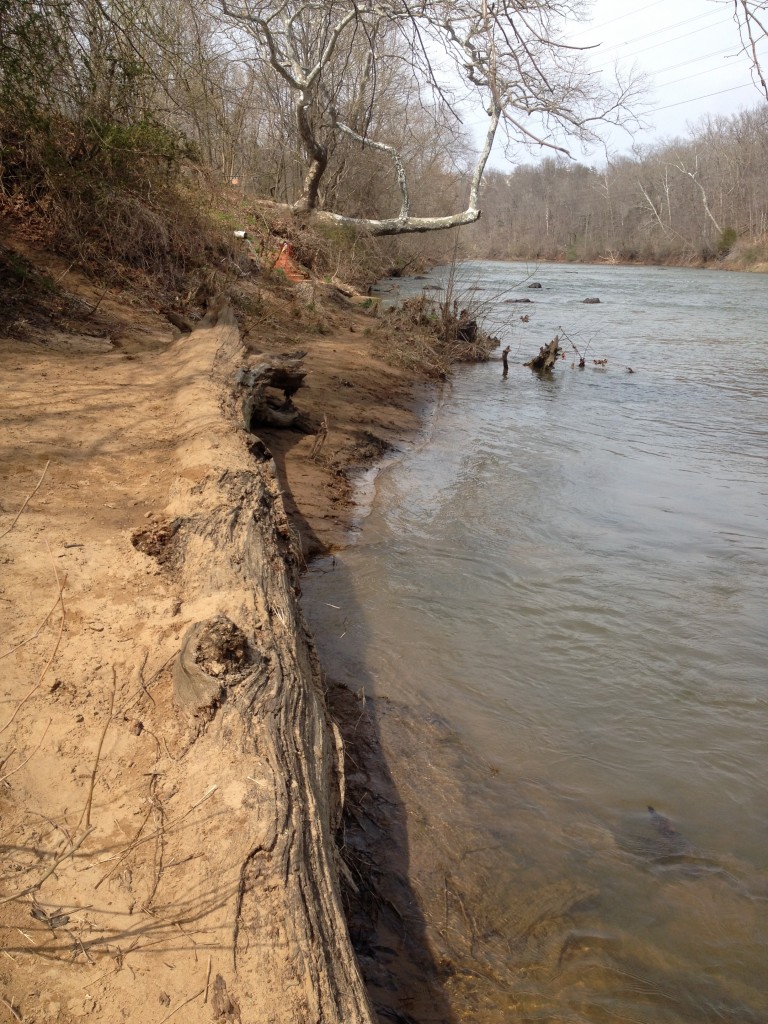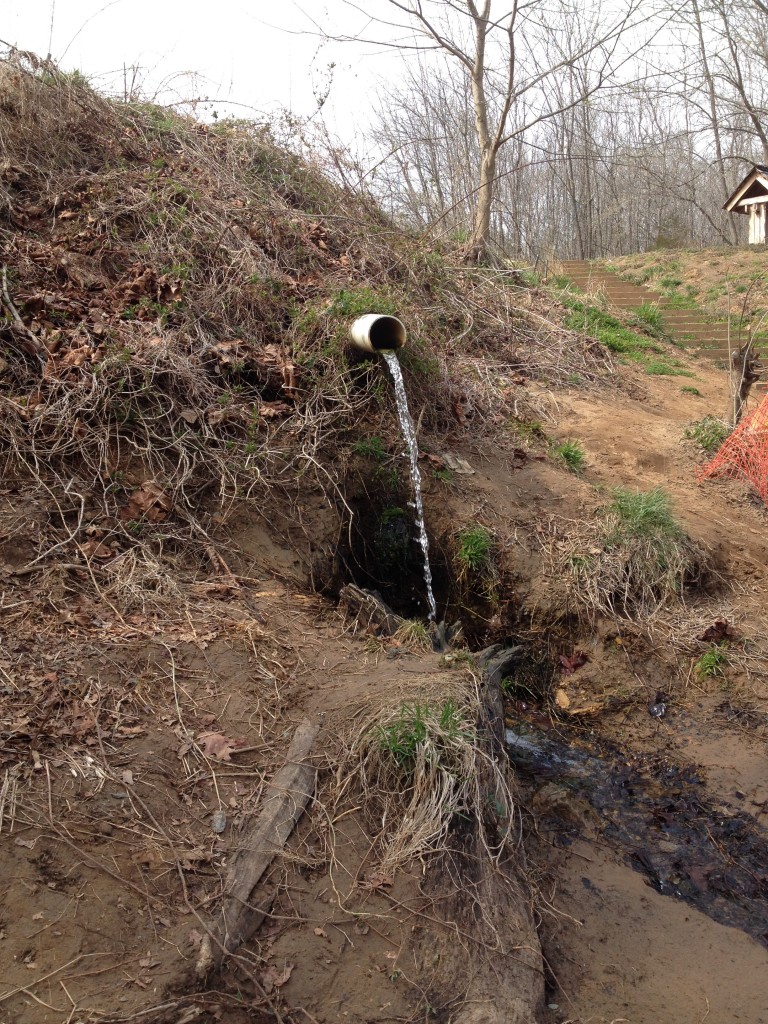Hello. My name is Henry Peltz and I a second year at the University of Virginia studying Environmental Thought and Practice, and Economics. Recently, in the last month, there were a multitude of obstacles blocking our ability to study the wildlife in aquatic settings: heavy snowfall, spring break, and lots of rain. Now, with the spring finally here, we plan to heavily watch and research the biodiversity around Charlottesville’s aquatic life.
I went to the Rivanna River to start observations of biodiversity and population surrounding the river. I was unable to take pH, nitrate, phosphorus and acidity of the river as we are awaiting our field-testing kit. After watching and observing the various parts of nature surrounding me, I discovered at least 10 different types of bushes and plant species. There was also a multitude of different types of trees (maple, tuliptree, black walnut, small white oak, etc.). What interested me was that a spider (or so I assumed) made a nest for its larva in the concaves of branches, resting in trees. There was very little, even none in some areas, garbage around and surrounding the banks of the river. The sound of birds was all around me, in various chirps and hums, indicating a strong biodiversity level of the river.
Across the water there was a tree that was barely hanging on the ground. It seemed like it could fall anytime soon, and potentially could cause a problem with the power line near it. It seems that in a few years the tree will join the other trees that have collapsed and fallen into the river to form either: a natural riverbank or a formation in the middle of the river.
What was very interesting about the river was a pipe I found feeding water into the river. There was no indication of where the water was coming from or if it was storm-water drainage. I can assume though that it wasn’t from a company population or sewage, and more likely to be storm-water drainage, as the water was clean and seemed to be relatively natural. I was surprised though that water was being fed into the river.
The area seemed to be full of biodiversity and it was easy to hear many different types of birds, see many different species of birds and smell various sprouting flowers. At the very end of the walkable trail, there was a rabbit hole in the ground that showed different types of species that exist around the river. The good health of the river is probably due to the Rivanna Conservation Society working to fix and increase the health of the river. There work includes lots of steam bank renovation and native tree planting occurring alongside the entire river. I don’t expect there to be much acidity or high ion levels in the river. It seemed, from an observation standpoint, to be generally healthy.
Post by Henry Peltz, Second-Year, Environmental Thought and Practice and Economics



